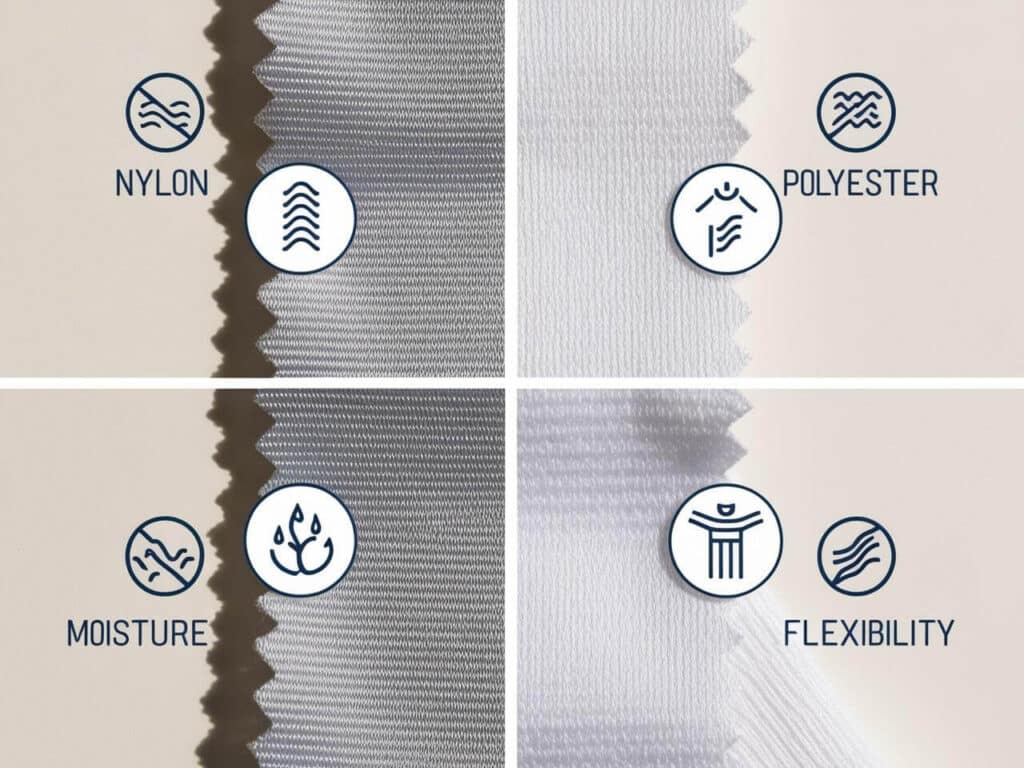Introduction
When it comes to choosing between nylon and polyester, many people wonder: Which fabric is better? The answer depends on what you need—whether it’s durability, moisture resistance, or flexibility.
Both fabrics are widely used in clothing, activewear, outdoor gear, and upholstery, but they have key differences that make them suitable for different applications.
Through years of experience testing synthetic fabrics, I’ve found that nylon is the strongest, while polyester is better for moisture-wicking and breathability. But which one should you choose?
In this guide, you’ll learn:
✔ The main differences between nylon and polyester.
✔ Which fabric is best for sportswear, outdoor gear, and everyday wear.
✔ The eco-friendly alternatives, including recycled nylon & polyester.
What is Nylon?
Nylon is a strong, flexible, and lightweight synthetic fiber originally developed as a silk alternative in the 1930s. It’s known for its high durability and abrasion resistance, making it ideal for activewear, outdoor gear, and industrial applications.
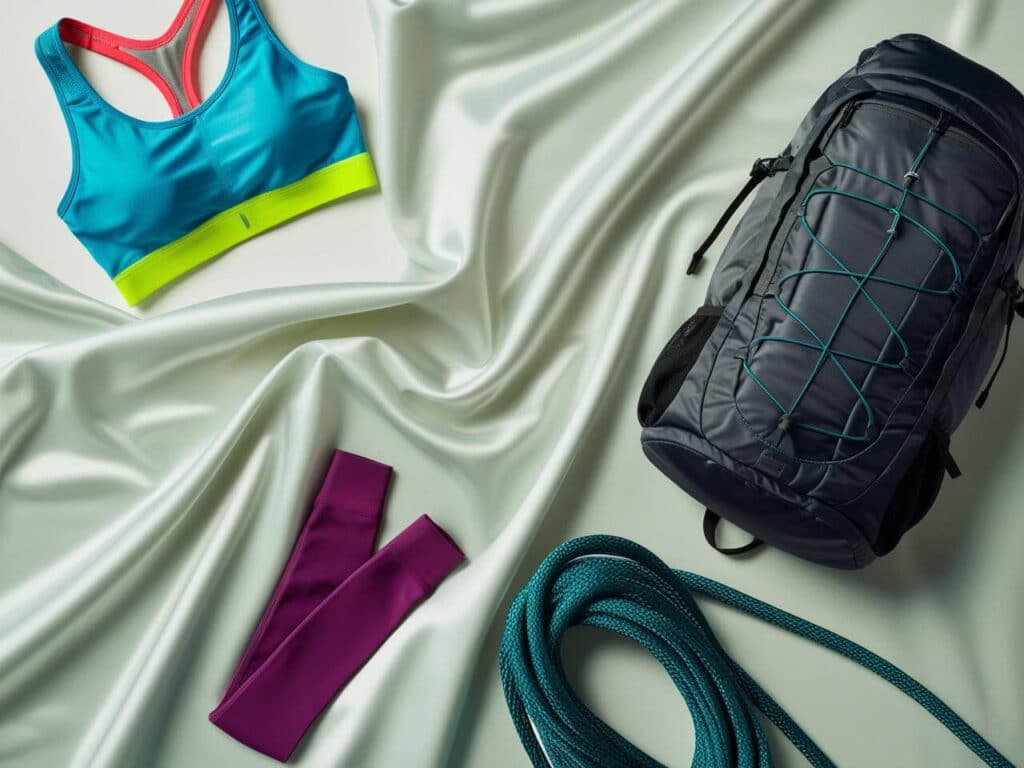
🔹 Key Features of Nylon
✔ High Strength & Durability – Resistant to tears and stretching.
✔ Soft & Flexible – Feels smooth and comfortable against the skin.
✔ Water Absorption – Absorbs more moisture than polyester, drying slower.
✔ Abrasion-Resistant – Excellent for outdoor and high-impact sportswear.
✔ Less Breathable – Traps heat more than polyester.
🔹 Common Uses of Nylon
✅ Sportswear & Activewear – Used in leggings, compression gear, and high-performance sportswear.
✅ Outdoor Gear – Found in backpacks, rain jackets, and parachutes due to its toughness.
✅ Stockings & Tights – Its stretch and elasticity make it a great choice for hosiery.
✅ Industrial Applications – Used in ropes, seatbelts, and airbags for its high strength.
What is Polyester?
Polyester is a versatile, synthetic fiber known for its moisture resistance, durability, and affordability. It was developed in the 1940s as an alternative to natural fibers like cotton and wool. Today, it’s widely used in sportswear, home textiles, and outdoor gear due to its quick-drying and wrinkle-resistant properties.
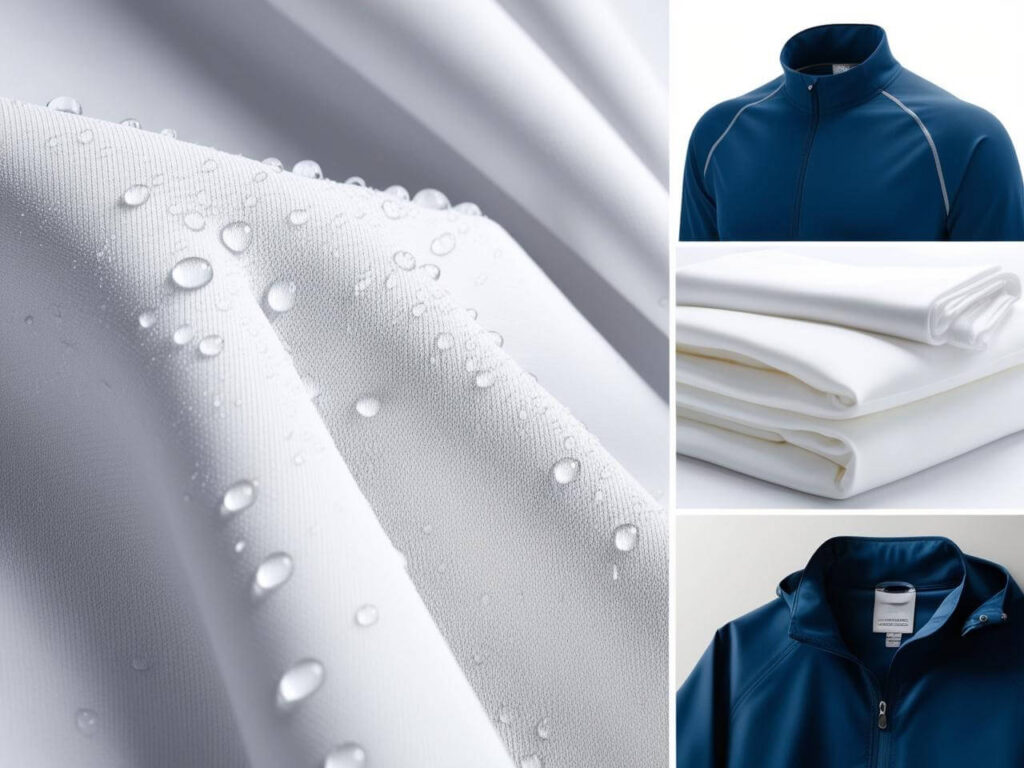
🔹 Key Features of Polyester
✔ Moisture-Wicking & Quick-Drying – Absorbs less water and dries faster than nylon.
✔ Wrinkle & Shrink-Resistant – Holds shape well even after multiple washes.
✔ More Breathable Than Nylon – Allows better airflow, making it more comfortable in hot weather.
✔ Slightly Rougher Texture – Not as soft as nylon but durable.
✔ Eco-Friendly Options Available – Recycled polyester (rPET) is a sustainable alternative.
🔹 Common Uses of Polyester
✅ Sportswear & Gym Clothes – Ideal for moisture-wicking workout gear and running apparel.
✅ Everyday Clothing – Used in t-shirts, jackets, and pants due to its wrinkle resistance.
✅ Home Textiles – Found in bed sheets, curtains, and upholstery fabrics.
✅ Outdoor Gear – Used in waterproof jackets, tents, and backpacks for its durability.
Nylon vs Polyester: Key Differences
To help you compare nylon and polyester, here’s a side-by-side breakdown of their key differences.
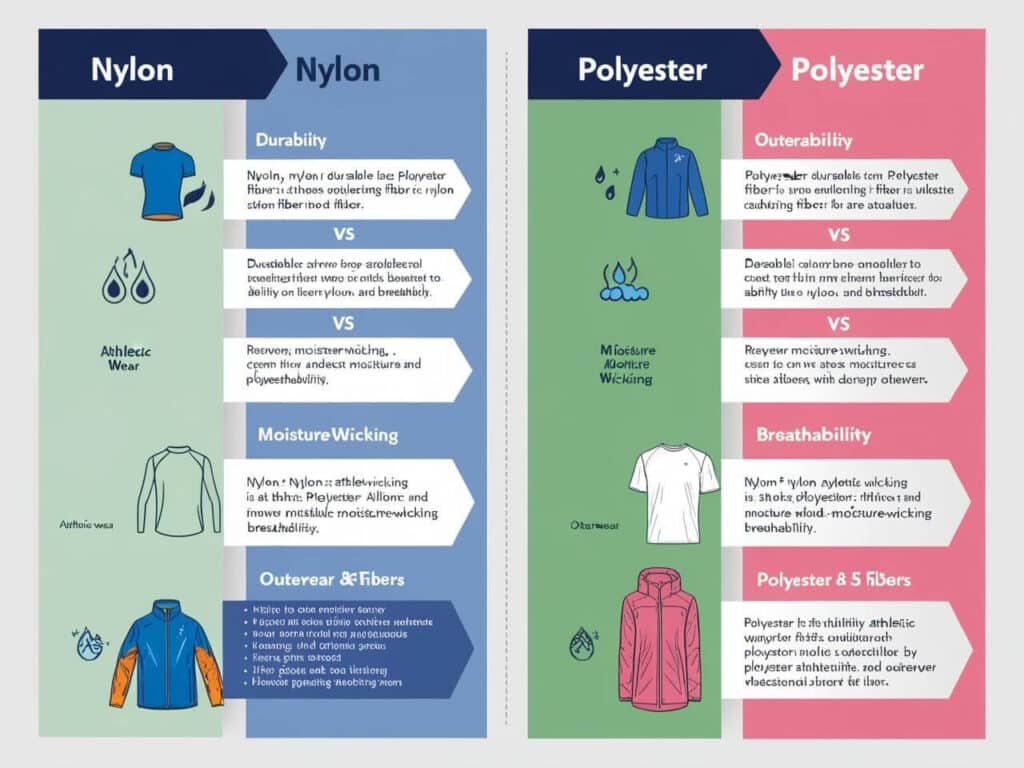
🔹 Nylon vs Polyester: Comparison Table
| Feature | Nylon | Polyester |
| Strength & Durability | ✅ More durable & abrasion-resistant | ✅ Strong, but slightly less resistant to tears |
| Moisture Absorption | ❌ Absorbs more moisture, dries slower | ✅ More water-resistant & quick-drying |
| Softness | ✅ Softer & more flexible | ❌ Slightly rougher texture |
| Breathability | ❌ Less breathable | ✅ More breathable |
| Stretchability | ✅ More flexible & stretchable | ✅ Holds shape better but less stretchy |
| Wrinkle Resistance | ❌ Prone to wrinkles | ✅ Highly wrinkle-resistant |
| Eco-Friendliness | ❌ Less sustainable, but available in recycled versions | ✅ More recyclable & widely available in sustainable forms |
| Best for | High-performance sportswear, backpacks, outdoor gear | Everyday wear, workout clothes, home textiles |
🔹 Key Takeaways
✔ Nylon is stronger, stretchier, and more abrasion-resistant.
✔ Polyester is more moisture-resistant, breathable, and quick-drying.
✔ Both have sustainable options, but recycled polyester is more widely used.
Which is Better? Choosing the Right Fabric for Your Needs
Now that we’ve compared nylon vs polyester, let’s break down which fabric is better for different use cases.
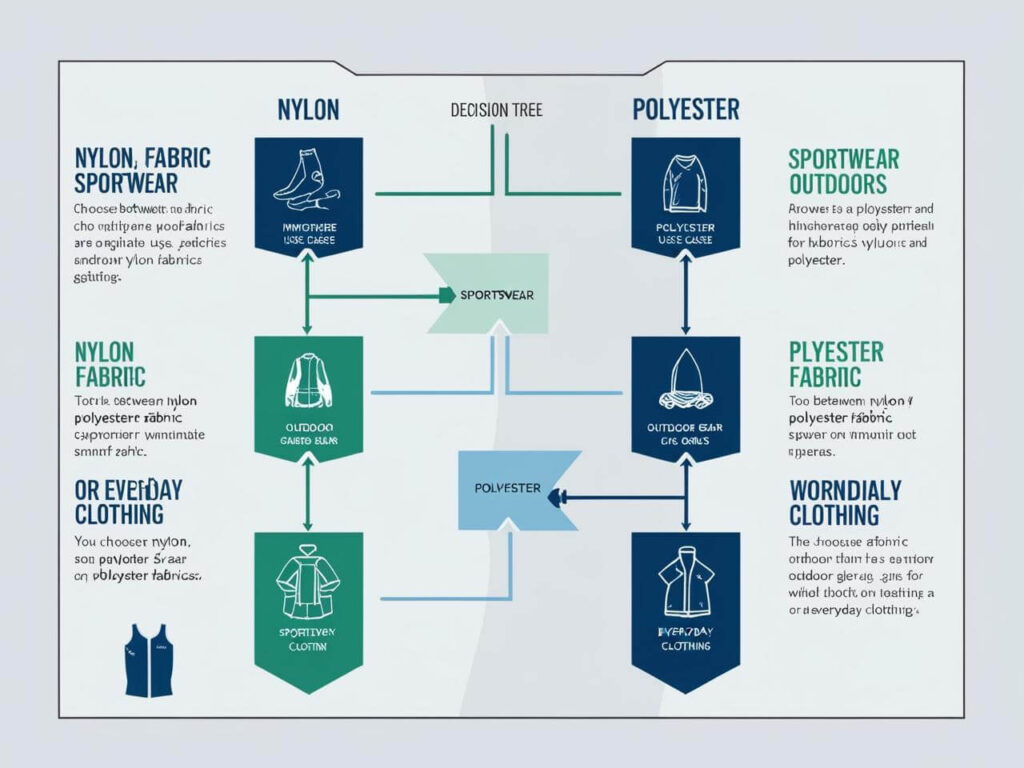
🔹 When to Choose Nylon
✅ For Sportswear & Activewear → Best for high-impact workouts where stretch & durability are needed.
✅ For Outdoor Gear → More tear-resistant, making it ideal for backpacks, hiking gear, and rain jackets.
✅ For Compression Clothing → Provides better elasticity for leggings and athletic wear.
🔻 Avoid nylon if: You need quick-drying or more breathable clothing.
🔹 When to Choose Polyester
✅ For Everyday Wear → Wrinkle-resistant and easy to maintain for casual clothing.
✅ For Moisture-Wicking & Quick-Drying Gear → Ideal for gym clothes, running apparel, and sports jerseys.
✅ For Eco-Friendly Choices → Recycled polyester (rPET) is widely available in sustainable fashion.
🔻 Avoid polyester if: You need maximum flexibility or softness against the skin.
🔹 Final Verdict: Nylon vs Polyester – Which One Wins?
💡 If you need maximum strength & flexibility → Choose nylon.
💡 If you need breathability & moisture resistance → Choose polyester.
FAQs (People Also Ask)
Here are answers to some of the most frequently asked questions about nylon vs polyester, based on Google’s “People Also Ask” section.
❓ Is nylon better than polyester for clothing?
✔ It depends on the purpose – Nylon is stronger and stretchier, while polyester is more breathable and quick-drying.
❓ Which fabric dries faster: nylon or polyester?
✔ Polyester dries faster because it absorbs less moisture than nylon.
❓ Is nylon or polyester more breathable?
✔ Polyester is more breathable, making it better for hot weather and sportswear.
❓ Is nylon more expensive than polyester?
✔ Yes, nylon is generally more expensive due to its higher durability and stretchability.
❓ Which is more eco-friendly: nylon or polyester?
✔ Recycled polyester is the more sustainable option, as it’s widely available and easier to recycle than nylon.
Nylon vs Polyester: Which One Should You Choose?
Choosing between nylon and polyester comes down to your specific needs. Both fabrics are versatile, durable, and widely used, but they offer different advantages.
✔ Key Takeaways:
- Nylon is stronger, stretchier, and more durable → Best for outdoor gear, compression wear, and backpacks.
- Polyester is more moisture-resistant, quick-drying, and breathable → Ideal for sportswear, casual clothing, and home textiles.
- For sustainability, recycled polyester (rPET) is a better eco-friendly choice than traditional nylon.
✔ Final Tips:
- If you need maximum durability & flexibility, go for nylon.
- If you want lightweight, moisture-wicking fabric, choose polyester.
- For eco-conscious choices, recycled polyester is the best option.
Final Thoughts
Both nylon and polyester have their strengths, and the best choice depends on your intended use. By understanding their differences, you can make a smarter fabric choice for your clothing, gear, and lifestyle.
